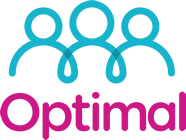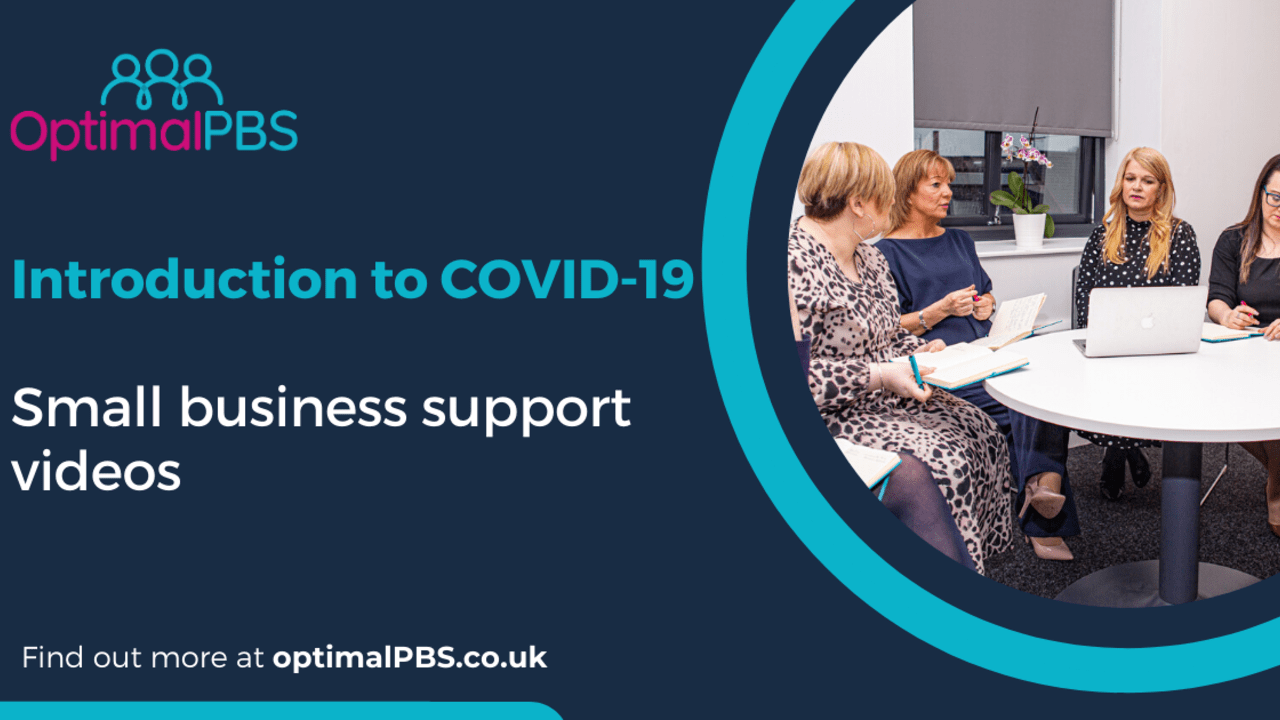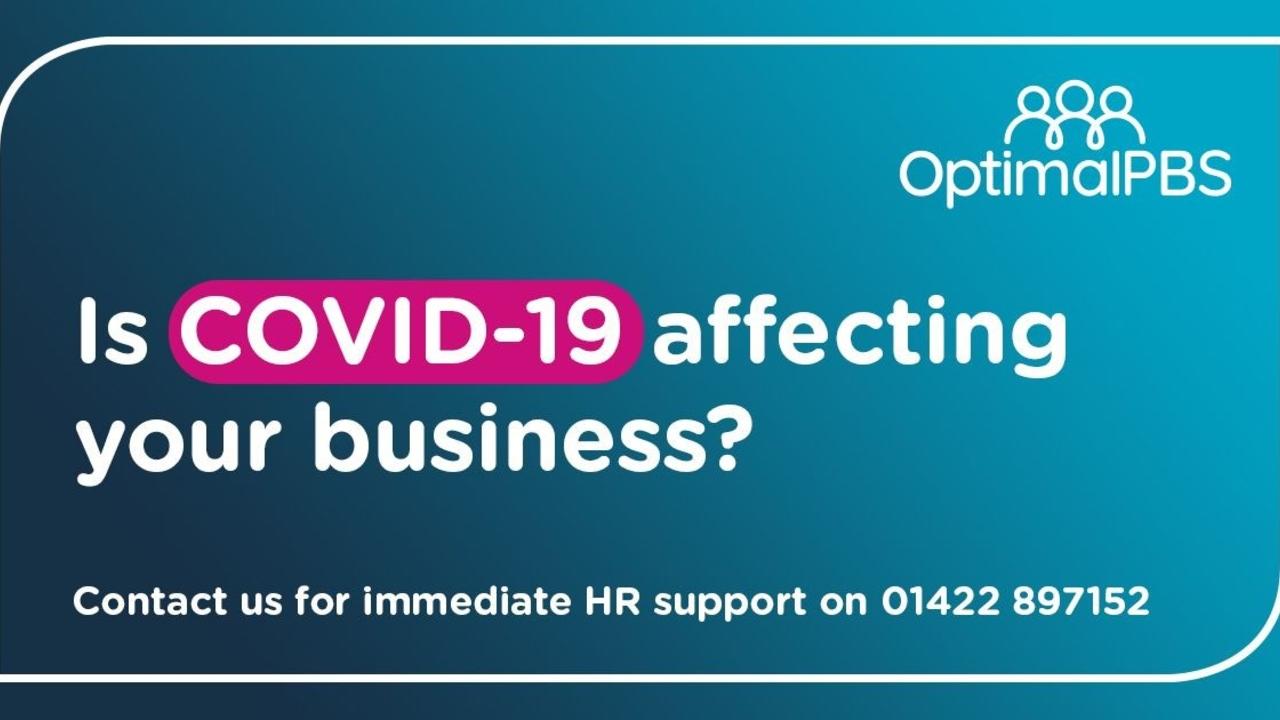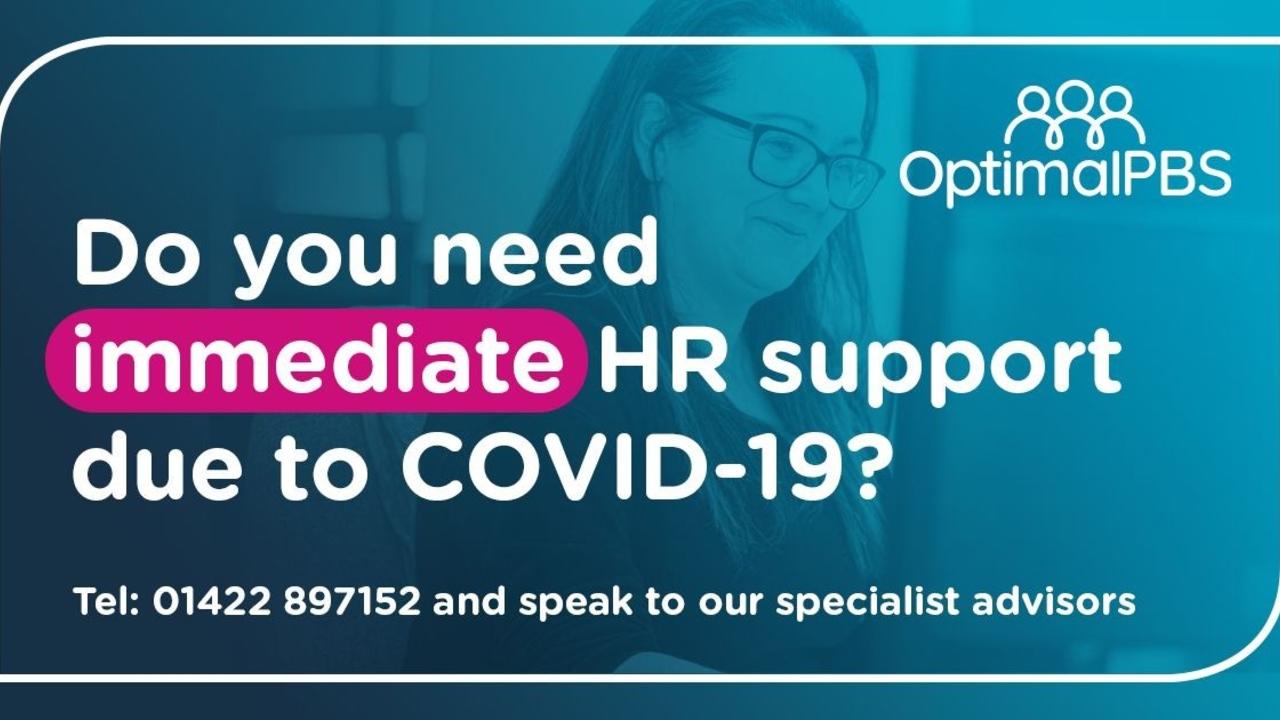 admin
admin
Update on Furlough Scheme cut off date – extended to March 19th.
The Governments Furlough scheme cut-off date has been extended to 19 March today.
Thousands more employees will able to receive support through the Coronavirus Job Retention Scheme (CJRS) after the eligibility date was extended to 19 March 2020, the government announced today.
- eligibility cut-off date for Coronavirus Job Retention Scheme extended to 19 March 2020
- the change will mean thousands more workers can be furloughed
- scheme expected to be fully operational next week
Under the scheme announced by Chancellor Rishi Sunak last month, employers can claim a grant covering 80% of the wages for a furloughed employee, subject to a cap of £2,500 a month.
To qualify and to protect against fraudulent claims, individuals originally had to be employed on February 28 2020.
But following a review of the delivery system and to ensure the scheme helps as many people as possible, new guidance published today has confirmed the eligibility date has been extended to March 19 2020– the day before the scheme was announced.
Employers can claim for furloughed employees that were employed and on their PAYE payroll on or before 19 March 2020. This means that the employee must have been notified to HMRC through an RTI submission notifying payment in respect of that employee on or before 19 March 2020.
This change makes the scheme more generous while keeping the substantial fraud risks under control and is expected to benefit over 200,000 employees.
COVID-19 – Self-Employment Income Support Scheme Details
Claim a grant through the coronavirus (COVID-19) Self-employment Income Support Scheme
The Government has released information on the financial support available for self-employed workers during the Coronavirus (COVID-19) lockdown. This information was provided on Thursday 26th March 2020.
The information gives you guidance on who can apply, how much you are entitled to and how to apply. It also gives you details of other support which is available that you may consider accessing.
Use this scheme if you’re self-employed or a member of a partnership and have lost income due to coronavirus.
Who can apply
You can apply if you’re a self-employed individual or a member of a partnership and you:
- have submitted your Income Tax Self Assessment tax return for the tax year 2018-19
- traded in the tax year 2019-20
- are trading when you apply, or would be except for COVID-19
- intend to continue to trade in the tax year 2020-21
- have lost trading/partnership trading profits due to COVID-19
Your self-employed trading profits must also be less than £50,000 and more than half of your income come from self-employment. This is determined by at least one of the following conditions being true:
- having trading profits/partnership trading profits in 2018-19 of less than £50,000 and these profits constitute more than half of your total taxable income
- having average trading profits in 2016-17, 2017-18, and 2018-19 of less than £50,000 and these profits constitute more than half of your average taxable income in the same period
If you started trading between 2016-19, HMRC will only use those years for which you filed a Self-Assessment tax return.
If you have not submitted your Income Tax Self-Assessment tax return for the tax year 2018-19, you must do this by 23 April 2020.
HMRC will use data on 2018-19 returns already submitted to identify those eligible and will risk assess any late returns filed before the 23 April 2020 deadline in the usual way.
How much you’ll get
You’ll get a taxable grant which will be 80% of the average profits from the tax years (where applicable):
- 2016 to 2017
- 2017 to 2018
- 2018 to 2019
To work out the average HMRC will add together the total trading profit for the 3 tax years (where applicable) then divide by 3 (where applicable), and use this to calculate a monthly amount.
It will be up to a maximum of £2,500 per month for 3 months.
We’ll pay the grant directly into your bank account, in one instalment.
How to apply
You cannot apply for this scheme yet.
HMRC will contact you if you are eligible for the scheme and invite you to apply online.
Individuals do not need to contact HMRC now and doing so will only delay the urgent work being undertaken to introduce the scheme.
You will access this scheme only through GOV.UK. If someone texts, calls or emails claiming to be from HMRC, saying that you can claim financial help or are owed a tax refund, and asks you to click on a link or to give information such as your name, credit card or bank details, it is a scam.
After you’ve applied
Once HMRC has received your claim and you are eligible for the grant, we will contact you to tell you how much you will get and the payment details.
If you claim tax credits you’ll need to include the grant in your claim as income.
Other help you can get
The government is also providing the following additional help for the self-employed:
- deferral of Self Assessment income tax payments due in July 2020 and VAT payments due from 20 March 2020 until 30 June 2020
- grants for businesses that pay little or no business rates
- increased amounts of Universal Credit
- Business Interruption Loan Scheme
If you’re a director of your own company and paid through PAYE you may be able to get support using the Job Retention Scheme.
Optimal PBS are still offering up to 30 minutes free telephone advice to any self-employed person who has any further queries.
To book your free advice call, ring 01422 897152 or email enquiries@optimal-hr.co.uk
We are here to help.
Coronavirus Job Retention Scheme (CJRS) – HMRC updated information
Claim for your employee’s wages through the Coronavirus Job Retention Scheme
The Government have released further details of the Coronavirus Job Retention Scheme (CJRS) which relates to what many of you now know as Furlough.
Below are the details, provided by HMRC on the scheme, who is eligible and how employers are going to be able to make a claim.
Find out if you’re eligible and how much you can claim to cover wages for employees on temporary leave (“furlough”) due to coronavirus (COVID-19).
The online service you’ll use to claim is not available yet. It is expected to be available by the end of April 2020.
The Coronavirus Job Retention Scheme is a temporary scheme open to all UK employers for at least three months starting from 1 March 2020. It is designed to support employers whose operations have been severely affected by coronavirus (COVID-19).
Employers can use a portal to claim for 80% of furloughed employees’ (employees on a leave of absence) usual monthly wage costs, up to £2,500 a month, plus the associated Employer National Insurance contributions and minimum automatic enrolment employer pension contributions on that wage. Employers can use this scheme anytime during this period.
The scheme is open to all UK employers that had created and started a PAYE payroll scheme on 28 February 2020.
Who can claim
Any UK organisation with employees can apply, including:
- businesses
- charities
- recruitment agencies (agency workers paid through PAYE)
- public authorities
You must have created and started a PAYE payroll scheme on or before 28 February 2020 and have a UK bank account.
Where a company is being taken under the management of an administrator, the administrator will be able to access the Job Retention Scheme.
Public sector organisations
The government expects that the scheme will not be used by many public sector organisations, as the majority of public sector employees are continuing to provide essential public services or contribute to the response to the coronavirus outbreak.
Where employers receive public funding for staff costs, and that funding is continuing, we expect employers to use that money to continue to pay staff in the usual fashion – and correspondingly not furlough them. This also applies to non-public sector employers who receive public funding for staff costs.
Organisations who are receiving public funding specifically to provide services necessary to respond to COVID-19 are not expected to furlough staff.
In a small number of cases, for example where organisations are not primarily funded by the government and whose staff cannot be redeployed to assist with the coronavirus response, the scheme may be appropriate for some staff.
Employees you can claim for:
Furloughed employees must have been on your PAYE payroll on 28 February 2020, and can be on any type of contract, including:
- full-time employees
- part-time employees
- employees on agency contracts
- employees on flexible or zero-hour contracts
The scheme also covers employees who were made redundant since 28 February 2020, if they are rehired by their employer.
To be eligible for the subsidy, when on furlough, an employee can not undertake work for or on behalf of the organisation. This includes providing services or generating revenue. While on furlough, the employee’s wage will be subject to usual income tax and other deductions.
This scheme is only for employees on agency contracts who are not working.
If an employee is working, but on reduced hours, or for reduced pay, they will not be eligible for this scheme and you will have to continue paying the employee through your payroll and pay their salary subject to the terms of the employment contract you agreed.
Employers should discuss with their staff and make any changes to the employment contract by agreement. When employers are making decisions in relation to the process, including deciding who to offer furlough to, equality and discrimination laws will apply in the usual way.
To be eligible for the subsidy employers should write to their employee confirming that they have been furloughed and keep a record of this communication.
Employees hired after 28 February 2020 cannot be furloughed or claimed for in accordance with this scheme.
You do not need to place all your employees on furlough. However, those employees who you do place on furlough cannot undertake work for you.
If your employee is on unpaid leave:
Employees on unpaid leave cannot be furloughed, unless they were placed on unpaid leave after 28 February.
If your employee is on Statutory Sick Pay:
Employees on sick leave or self-isolating should get Statutory Sick Pay, but can be furloughed after this.
Employees who are shielding in line with public health guidance can be placed on furlough.
If your employee has more than one job:
If your employee has more than one employer they can be furloughed for each job. Each job is separate, and the cap applies to each employer individually.
If your employee does volunteer work or training:
A furloughed employee can take part in volunteer work or training, as long as it does not provide services to or generate revenue for, or on behalf of your organisation.
However, if workers are required to for example, complete online training courses whilst they are furloughed, then they must be paid at least the NLW/NMW for the time spent training, even if this is more than the 80% of their wage that will be subsidised.
If your employee is on Maternity Leave, contractual adoption pay, paternity pay or shared parental pay:
Individuals who are on or plan to take Maternity Leave must take at least 2 weeks off work (4 weeks if they work in a factory or workshop) immediately following the birth of their baby. This is a health and safety requirement. In practice, most women start their Maternity Leave before they give birth.
If your employee is eligible for Statutory Maternity Pay (SMP) or Maternity Allowance, the normal rules apply, and they are entitled to claim up to 39 weeks of statutory pay or allowance.
Employees who qualify for SMP, will still be eligible for 90% of their average weekly earnings in the first 6 weeks, followed by 33 weeks of pay paid at 90% of their average weekly earnings or the statutory flat rate (whichever is lower). The statutory flat rate is currently £148.68 a week, rising to £151.20 a week from April 2020.
If you offer enhanced (earnings related) contractual pay to women on Maternity Leave, this is included as wage costs that you can claim through the scheme.
The same principles apply where your employee qualifies for contractual adoption, paternity or shared parental pay.
Work out what you can claim:
Employers need to make a claim for wage costs through this scheme.
You will receive a grant from HMRC to cover the lower of 80% of an employee’s regular wage or £2,500 per month, plus the associated Employer National Insurance contributions and minimum automatic enrolment employer pension contributions on that subsidised wage. Fees, commission and bonuses should not be included.
At a minimum, employers must pay their employee the lower of 80% of their regular wage or £2,500 per month. An employer can also choose to top up an employee’s salary beyond this but is not obliged to under this scheme.
We will issue more guidance on how employers should calculate their claims for Employer National Insurance Contributions and minimum automatic enrolment employer pension contributions, before the scheme becomes live.
Full time and part time employees:
For full time and part time salaried employees, the employee’s actual salary before tax, as of 28 February should be used to calculate the 80%. Fees, commission and bonuses should not be included.
Employees whose pay varies:
If the employee has been employed (or engaged by an employment business) for a full twelve months prior to the claim, you can claim for the higher of either:
- the same month’s earning from the previous year
- average monthly earnings from the 2019-20 tax year
If the employee has been employed for less than a year, you can claim for an average of their monthly earnings since they started work.
If the employee only started in February 2020, use a pro-rata for their earnings so far to claim.
Once you’ve worked out how much of an employee’s salary you can claim for, you must then work out the amount of Employer National Insurance Contributions and minimum automatic enrolment employer pension contributions you are entitled to claim.
Employer National Insurance and Pension Contributions:
All employers remain liable for associated Employer National Insurance contributions and minimum automatic enrolment employer pension contributions on behalf of their furloughed employees.
You can claim a grant from HMRC to cover wages for a furloughed employee, equal to the lower of 80% of an employee’s regular salary or £2,500 per month, plus the associated Employer National Insurance contributions and minimum automatic enrolment employer pension contributions on paying those wages.
You can choose to provide top-up salary in addition to the grant. Employer National Insurance Contributions and automatic enrolment contribution on any additional top-up salary will not be funded through this scheme. Nor will any voluntary automatic enrolment contributions above the minimum mandatory employer contribution of 3% of income above the lower limit of qualifying earnings (which is £512 per month until 5th April and will be £520 per month from 6th April 2020 onwards).
National Living Wage/National Minimum Wage:
Individuals are only entitled to the National Living Wage (NLW)/National Minimum Wage (NMW) for the hours they are working.
Therefore, furloughed workers, who are not working, must be paid the lower of 80% of their salary, or £2,500 even if, based on their usual working hours, this would be below NLW/NMW.
However, if workers are required to for example, complete online training courses whilst they are furloughed, then they must be paid at least the NLW/NMW for the time spent training, even if this is more than the 80% of their wage that will be subsidised.
What you’ll need to make a claim:
Employers should discuss with their staff and make any changes to the employment contract by agreement. Employers may need to seek legal advice on the process. If sufficient numbers of staff are involved, it may be necessary to engage collective consultation processes to procure agreement to changes to terms of employment.
To claim, you will need:
- your ePAYE reference number
- the number of employees being furloughed
- the claim period (start and end date)
- amount claimed (per the minimum length of furloughing of 3 weeks)
- your bank account number and sort code
- your contact name
- your phone number
You will need to calculate the amount you are claiming. HMRC will retain the right to retrospectively audit all aspects of your claim.
Claim:
The online service you’ll use to claim is not available yet. We expect it to be available by the end of April 2020.
You can only submit one claim at least every 3 weeks, which is the minimum length an employee can be furloughed for. Claims can be backdated until the 1 March if applicable.
What to do after you’ve claimed:
Once HMRC have received your claim and you are eligible for the grant, they will pay it via BACS payment to a UK bank account.
You should make your claim in accordance with actual payroll amounts at the point at which you run your payroll or in advance of an imminent payroll.
You must pay the employee all the grant you receive for their gross pay, no fees can be charged from the money that is granted. You can choose to top up the employee’s salary, but you do not have to.
When the government ends the scheme:
When the government ends the scheme, you must make a decision, depending on your circumstances, as to whether employees can return to their duties. If not, it may be necessary to consider termination of employment (redundancy).
Employees that have been furloughed:
Employees that have been furloughed have the same rights as they did previously. That includes Statutory Sick Pay entitlement, maternity rights, other parental rights, rights against unfair dismissal and to redundancy payments.
Once the scheme has been closed by the government, HMRC will continue to process remaining claims before terminating the scheme.
Income tax and Employee National Insurance:
Wages of furloughed employees will be subject to Income Tax and National Insurance as usual. Employees will also pay automatic enrolment contributions on qualifying earnings, unless they have chosen to opt-out or to cease saving into a workplace pension scheme.
Employers will be liable to pay Employer National Insurance contributions on wages paid, as well as automatic enrolment contributions on qualifying earnings unless an employee has opted out or has ceased saving into a workplace pension scheme.
Tax Treatment of the Coronavirus Job Retention Grant:
Payments received by a business under the scheme are made to offset these deductible revenue costs. They must therefore be included as income in the business’s calculation of its taxable profits for Income Tax and Corporation Tax purposes, in accordance with normal principles.
Businesses can deduct employment costs as normal when calculating taxable profits for Income Tax and Corporation Tax purposes.
This information was provided by HMRC on Thursday 26th March 2020 and can be found directly on their website:
If you are an employer and you have any questions on how Coronavirus is affecting your Company and employees please do give us a call. We offer 30 minutes free telephone advice which is often all you need. 01422 897152
What is a Furlough worker and how does it work?
The current COVID-19 pandemic is causing significant worries for employers and employees alike across the UK. A number of measures have been put in place by the government to help employers stay afloat.
The Chancellor on the 20th March announced that there is an unlimited support package on offer for businesses to support them with employee salaries in this time of need. This scheme has been named the ‘Coronavirus job retention scheme’ and the aim is to maintain employment and support businesses in these uncertain times.
What does this scheme mean for businesses?
High level guidance released by the government advising employers of the support that is available for businesses and its employees is now available (click here). However, we are still waiting for the detail regarding how this is going to be implemented.
Below is a brief overview of the scheme as it is at the 23rd March 2020 and we will continue to update you in the coming weeks as soon as further updates are received.
What is the scheme?
The government has stated that there is a grant offering to fund 80% (capped at £2,500 per employee) of the total cost of wages of their workforce who remain employed but cannot currently work due to the coronavirus outbreak.
Are you eligible?
All employees are eligible whether they be sole traders, limited liability companies, partnerships or charities. The aim is to provide employers with the financial support to avoid having to consider redundancies, layoffs and short time measures.
What do you need to do and which of my employees does this apply to?
The employee needs to be identified as a designate ‘furloughed’ employee for the grant to apply. The government has indicated that to be “furloughed”, the employee needs to remain employed, and that they cannot undertake any work within this period.
Employees cannot request this it needs to be initiated by the employer. If your employees can work from home and manage business requirements and there is work available for them to do, they will not be eligible.
How is the grant calculated?
We are still waiting for the detail behind this and HMRC are working round the clock to get this process in place as soon as possible. There is a view that the cap of £2500 will include pension contributions and national insurance payments in the “cost” and that it is not limited to basic salary.
Can the employer choose the number of designate furloughed employees?
There is likely to be more guidance around this in the coming weeks however there are businesses where work demand may still be in place in one area and not another.
There is a warning here in that employers will need to be careful not to discriminate when selecting employees to be designated as furloughed. This process can have implications from an employee engagement perspective, and this will need to be a considering when communicating and implementing this process.
Do employers have to pay the remaining wage cost not covered by the grant for employees who are designated as furloughed”.
The current guidance states that your employer can chose to fund the difference between this payment and the salary however they are not obligated to do so.
You need to check what is stated in your Company’s current contracts of employment as not paying their full salary without a contractual right to withhold this could be risky and result in unlawful deductions of earnings.
We would strongly suggest you fully communicate your position with your employees and gain their agreement. After all these measures are being put in place to protect the business and employees jobs. You will need to ensure that you document these consultation process and confirm all the details in writing.
What are the timeframes of this scheme and when can the grant be applied for?
Currently the scheme is in place for 3 months however this could be extended depending on the government’s decision. The grant can be backdated to the 1st March 2020.
HMRC are working hard on the portal to enable businesses to apply for the retention scheme in the near future. More information will be made available in the coming weeks.
Can we still make employees redundant instead of designating them as furloughed?
This is a business decision, however you need to be aware of the length of service of your employees as they have employment law rights at 2 years and you need to ensure you take the relevant advice to managing this with employment law requirements in mind.
If an employee is self-isolating and receiving SSP can they be classed as a furloughed employee?
Yes, however we are waiting for more information on this point and it is likely that they will be able to receive the 80% salary, if eligible to receive full company sick pay.
So, what now…………………………………………..
We suggest that you start to identify who your potential furlough employees are and discuss this with them and seek their agreement and document these conversations. The current view is that employees will understand that these measures are in place to prevent having to make redundancies and save jobs.
We offer 30 minutes free telephone advice to any employer who needs HR support on any matters. Call us on 01422 897152. www.optimalpbs.co.uk
COVID-19 – Business Support Update as at Friday 20th March 2020
Optimal People & Business Services are working closely with the SME Fund Growth Managers in local authorities to ensure small and medium businesses are fully up to date with the grants and loans available to them during COVID-19.
If you require any support for your business, or advice on how to access the new funding then please do get in touch. We offer FREE initial advice to all employers on supporting employees and funding. To book your confidential consultation contact Mel Stead on 01422 897152 or email Mel@optimalpbs.co.uk
This update has been provided to us by local SME Growth Fund Managers from the announcement by the Government on Friday 20th March 2020.
The Chancellor of the Exchequer has announced a package of support to help workers, in addition to the package set out for business:
Coronavirus Job Retention Scheme
Under the Coronavirus Job Retention Scheme, all UK employers will be able to access support to continue paying part of their employees’ salary for those employees that would otherwise have been laid off during this crisis. Employers will need to:
- Designate affected employees as ‘furloughed workers,’ and notify employees of this change. Changing the status of employees remains subject to existing employment law and, depending on the employment contract, may be subject to negotiation; and
- Submit information to HMRC about the employees that have been furloughed and their earnings through a new online portal. HMRC will set out further details on the information required.
- HMRC will reimburse 80% of furloughed workers wage costs, up to a cap of £2,500 per month.
- HMRC are working urgently to set up a system for reimbursement. Existing systems are not set up to facilitate payments to employers. If your business needs short term cash flow support, you may be eligible for a Coronavirus Business Interruption Loan.
Deferring Valued Added Tax (VAT) payments for 3 months.
The deferral will apply from today until the end of June. This is an automatic offer with no applications required. Businesses will not need to make a VAT payment during this period. Taxpayers will be given until the end of the 2020-21 tax year to pay any liabilities that have accumulated during the deferral period. VAT refunds and reclaims will be paid by the government as normal.
Income Tax payments due in July 2020 under the Self Assessment system will be deferred to January 2021.
Income Tax Self-Assessment payments due on the 31 July 2020 will be deferred until the 31 January 2021. This is an automatic offer with no applications required. No penalties or interest for late payment will be charged in the deferral period.
HMRC Time to Pay
HMRC have also scaled up their Time to Pay offer to all firms and individuals who are in temporary financial distress as a result of Covid-19 and have outstanding tax liabilities. You can contact HMRC’s dedicated Covid-19 helpline to get practical help and advice. This can be reached by calling 0800 0159 559
Coronavirus Business Interruption Loan Scheme
A new temporary Coronavirus Business Interruption Loan Scheme, delivered by the British Business Bank, will launch early next week to support primarily small and medium-sized businesses to access bank lending and overdrafts. The government will provide lenders with a guarantee of 80% on each loan (subject to a per-lender cap on claims) to give lenders further confidence in continuing to provide finance to SMEs. The government will not charge businesses or banks for this guarantee, and the Scheme will support loans of up to £5 million in value. Businesses can access the first 12 months of that finance interest free.
Business closures to reduce social gathering
Government has asked that all cafes, pubs, bars and restaurants are to close on Friday 20 March. They can continue to provide take-out services. Nightclubs, theatres, cinemas, gyms and leisure centres should also close on Friday 20 March. This situation will be reviewed each month.
New Updates and Guidance
Closure of schools and care for the children of critical workers
Information for parents and carers about the closure of schools and other educational settings has been published. Children of workers who form a central part of effort to respond to the virus – such as NHS workers, police and delivery drivers – will continue to attend school, college or childcare provider. A full list of critical workers and further information is available.
Further details on exams and grades announced
Further details on arrangements for exams which have been cancelled to fight spread of coronavirus has been produced by the Department for Education.
Providing proof of coronavirus absence from work
People unable to work for more than seven days because of coronavirus (COVID-19) can obtain an isolation note through a new online service.
Guidance posters for staff, employers and businesses
Public Health England have produced guidance posters that should be downloaded, printed and displayed in the workplace:
Notices to exporters
The Department for International Trade’s Export Control Joint Unit (ECJU) has issued two Notices to Exporters concerning the impact on training and licensing activities. For general export control queries please contact ECJU’s Helpline on 020 7215 4594 or exportcontrol.help@trade.gov.uk.
Coronavirus (COVID-19) guidance for the charity sector
The Charity Commission have produced guidance to help running your charity during the outbreak.
Coronavirus (COVID-19): scientific evidence supporting the UK government response
The Government Office for Science has published new information on the national and global response to the spread of COVID-19 continues to develop quickly and our collective knowledge of the virus is growing by the second. You can find that information here.
COVID-19 – Business Support Update as at Thursday 19th March 2020
Business Support Update as at Thursday 19th March 2020:
Optimal People & Business Services will provide a daily update on the support available for Companies and employees during the COVID-19 situation
This information is provided by Local Authority SME Growth Teams who are keeping us updated as fast as possible so we can ensure we support our clients appropriately. Our huge thanks go to them for being so prompt with providing information.
If you need some free initial advice on how COVID-19 outbreak is affecting your business, then please call us on 01422 897152.
Please allow follow our social media pages on Facebook, LinkedIn, Twitter and Instagram.
1. Business Support announced by the Chancellor
On 17th March, the Chancellor announced unprecedented support for business and workers – to support the economy and businesses large and small. You can find his full speech here.
The package of government-backed and guaranteed loans to support businesses, making available an initial £330bn of guarantees – equivalent to 15% of GDP. That support will be delivered through two main schemes:
- To support liquidity amongst larger firms, a new lending facility with the Governor of the Bank of England to provide low cost, commercial paper.
- To support lending to small and medium sized businesses, extending the new Business Interruption Loan Scheme announced at the Budget.
The Chancellor also announced tax cuts of nearly £20bn for British businesses.
The measures provide a comprehensive, coordinated and coherent response to what is a serious and evolving economic situation. As the wider economic picture becomes clearer, the government will do whatever it takes to get our nation through the impacts of COVID-19 and stand ready to announce further action wherever necessary.
2. Business Support Measures in Detail
We will keep you up to date with the latest information on how businesses can access support as further details become available.
Business Rates holiday for retail, hospitality and leisure
- All businesses in the retail, hospitality and leisure sectors will pay no business rates in England for 12 months from 1 April 2020.
- There will be no rateable value threshold on this relief – businesses large and small will benefit.
- Guidance for local authorities on the application of the holiday has been published. Any enquiries on eligibility for, or provision of, the reliefs should be directed to the relevant local authority.
Small Business Grant Scheme
- The government will provide additional funding for local authorities to support small businesses that already pay little or no business rates.
- This funding will provide a one-off grant of £10,000 to businesses currently eligible for small business rate relief (SBBR) or rural rate relief.
- A £25,000 grant will be provided to retail, hospitality and leisure businesses operating from smaller premises, with a rateable value between £15,000 and £51,000.
- If your business is eligible for SBRR or rural rate relief, you will be contacted by your Local Authority – you do not need to apply.
- The Business Secretary will write to all Local Authorities by the end of the week with information on this scheme, and to encourage them to prepare to deliver this quickly.
Coronavirus Business Interruption Loan Scheme
- A new temporary Coronavirus Business Interruption Loan Scheme, delivered by the British Business Bank, will launch next week to support businesses to access bank lending and overdrafts.
- This will help ensure that eligible businesses facing short-term cash flow difficulties can continue to access finance as they respond to the temporary impact of the coronavirus outbreak on cash flow.
By providing an 80% government guarantee on eligible lending, this scheme will give lenders the confidence to keep lending to businesses. The government will provide as much capacity as required for this scheme. There will be no fee for lenders or borrowers to benefit from this guarantee
- The Scheme will support loans of up to £5 million in value. Businesses can access the first 6 months of that finance interest free, as government will cover the first 6 months of interest payments.
- The scheme is open to businesses with a turnover of less than £41m (as long as the business is long-term viable and is UK based) which meet the scheme’s eligibility criteria. Full details on the eligibility criteria will be announced shortly.
The first loans will be available next week and further details of the new scheme will be announced shortly. Businesses worried about accessing finance now should speak to their usual lender.
3. New Coronavirus Updates and Guidance
- Planning rules will be relaxed so pubs and restaurants can operate as hot food takeaways during the coronavirus outbreak.
NEW – Temporary relaxation of the enforcement of EU drivers’ hours rules: drivers supplying supermarkets
- Temporary relaxation of the EU drivers’ hours rules for a 30 day period, for drivers supplying supermarkets with food and other essential items
NEW – Schools, colleges and early years settings to close
- Schools will close from Monday, except for children of key workers and vulnerable children.
- Examples of key workers include NHS staff, police and supermarket delivery drivers who need to be able to go to work to support the country’s fight to tackle coronavirus.
- To support nurseries at this time, they will be eligible for a business rates holiday for one year and the Government will continue to pay funding to local authorities for free childcare entitlements.
NEW – Complete ban on evictions and additional protection for renters
NEW – Coronavirus (COVID-19) – delivering our public services
Our public-facing services are continuing to operate. On this page there will be updates if services are affected. Services include the redundancy payments helpline, bankruptcy and director interviews and support for business.
If you are a small or medium sized business then please do get in touch, we offer FREE initial advice. We have a large team of senior HR professionals here to help. 01422 897152.
Ready, Set, Work from home…..
In the coming weeks it’s more likely that some employees will be asked to work from due to the COVID-19 outbreak.
This can be the first time your business has put these measures in place and therefore new territory for all. Here are our hints and tips for you to consider during this transition.
1. Still prepare to go to work
Still carry out your normal getting ready for work routine, this psychologically helps you prepare for a day of work, sitting in your PJ’s might not be a good look for a video conference call.
Have some background music on but try and avoid continued updates from the news and what is happening regarding the COVID-19 outbreak as this could cause worry and panic.
2. Set clear expectations
Working your normal work hours will ensure your business knows that you are available, and you are still managing your work life balance.
Make sure you plan in regular breaks and get up from your desk and move around just like you would if you where in the office.
Find a suitable workspace in the house to minimise disruptions, especially if other members of the family are at home. You can do a self-check on your work space using the NHS guidance at https://www.nhs.uk/live-well/healthy-body/how-to-sit-correctly/
Have a list of what you plan to achieve that day as this will give you a sense of satisfaction when you start to tick off completed activities.
3. Getting out and about
Just because you are working from home does not mean you can’t go outside. Going for a short walk can clear the mind and undo any mental blocks and help regain your focus. If you are in isolation than you can still go for a walk however avoid close contact with others, see the government guidelines for further information on this.
4. It is good to talk
Agree the ways in which you are communicating with your team. Nobody wants you to be over communicating and sending more time checking in than working but its also important not to feel isolated.
Avoid too many ‘catch ups’ via emails, use video or call conferencing to keep in contact, interaction is very important to share ideas and keeps us stimulated.
Having a daily call with team is a good way of checking in and seeing who needs any support on work activities and finding out how everyone is feeling.
There are many video conferencing tools such a TEAMS in Microsoft Office which can be accessed is you use Office 365 or Zoom. Find out which tool your business is using and get yourself familiar with it.
5. Your Mental Wellbeing
If you need support don’t be afraid to ask for it, looking after your mental wellbeing is critically important as this can also impact you physically. In times like this we all need to work together to support each other and continue to maintain our wellbeing.
Look after yourself and set aside time to prioritise self-care – find some simple self-care tips here. https://mhfaengland.org/mhfa-centre/resources/address-your-stress/self-care.pdf
For information about mental health and coronavirus visit: – Mental Health Foundation’s https://www.mentalhealth.org.uk/publications/looking-after-your-mental-health-during-coronavirus-outbreak
Mind: https://www.mind.org.uk/information-support/coronavirus-and-your-wellbeing/
If you’re feeling anxious or isolated, remember that support is out there.
Give us a call if you would like to speak to one of our MHFA instructors to discuss how you can support your employees to maintain their well-being. 01422 897152.








